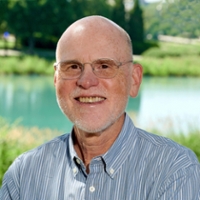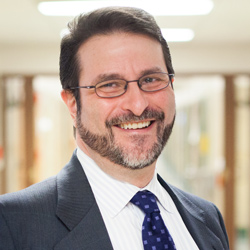Design 384 Students Work to Expand Sensor Network to Prairie Environment
Working with Professor Bill Miller and researchers, students helped design a power system for the Array of Things sensor network useable in a prairie setting
When Bill Miller, Northwestern Engineering professor of chemical and biological engineering, needed help modifying tools that monitor air quality so they could be remotely powered for use in the prairie, he joined forces with students in the Segal Design Institute class, Design 384: Interdisciplinary Design Projects, to find solutions.
 The Design 384 students collaborated with Miller to expand the Array of Things Waggle sensor network, developed by Argonne National Laboratory, into a prairie environment in order to collect environmental data. Their final prototype for powering the nodes utilized a wind turbine, solar panel, battery, and charge controllers on a reduced-size pole.
The Design 384 students collaborated with Miller to expand the Array of Things Waggle sensor network, developed by Argonne National Laboratory, into a prairie environment in order to collect environmental data. Their final prototype for powering the nodes utilized a wind turbine, solar panel, battery, and charge controllers on a reduced-size pole.
“Our team’s job was to design an off-the-grid, environmentally friendly power system which will be able to provide all the energy that’s needed for these nodes,” said William Whittenbury, a senior studying manufacturing and design engineering.
Through Design 384, students work on interdisciplinary projects for two quarters to design solutions to a problem posed by a client partner. Whittenbury and three other students in the winter quarter Design 384 class partnered with Miller, director of Center for Engineering Sustainability and Resilience, Aaron Packman, professor of civil and environmental engineering and (by courtesy) mechanical engineering and chemical and biological engineering, Argonne researcher Raj Sankaran, and two civil and environmental engineering graduate students, Liliana Hernandez Gonzalez and Vivien Rivera, to assist with their work in the Gensburg-Markham Prairie – part of the Indian Boundary Prairies owned by The Nature Conservancy and Northeastern Illinois University. Students visited the prairie during the two-quarter class.
“The collaboration is bringing a lot of good information for our work and can be used in the future for people working on these projects,” Gonzalez said.
 Array of Things is a collaborative effort including scientists, universities, local government, and communities to collect real-time data on urban environments, infrastructure, and activity for research and public use. In an urban area like Chicago, sensor nodes are used to measure data such traffic flow, weather patterns, temperature, and humidity to create a “smart city,” using information from those nodes to better manage the city. Now, Miller’s and Packman’s team of researchers are working to extend that technology to a prairie setting and use it to collect environmental information.
Array of Things is a collaborative effort including scientists, universities, local government, and communities to collect real-time data on urban environments, infrastructure, and activity for research and public use. In an urban area like Chicago, sensor nodes are used to measure data such traffic flow, weather patterns, temperature, and humidity to create a “smart city,” using information from those nodes to better manage the city. Now, Miller’s and Packman’s team of researchers are working to extend that technology to a prairie setting and use it to collect environmental information.
The sensors in the prairie would help measure environmental factors such as temperature, air pollutants and humidity. However, powering the nodes required students to consider environment restrictions such as fire hazards and wildlife safety.
“We’re trying to create a system that can provide all the power that that system needs in a way that won’t damage the environment that it’s in,” Whittenbury said.